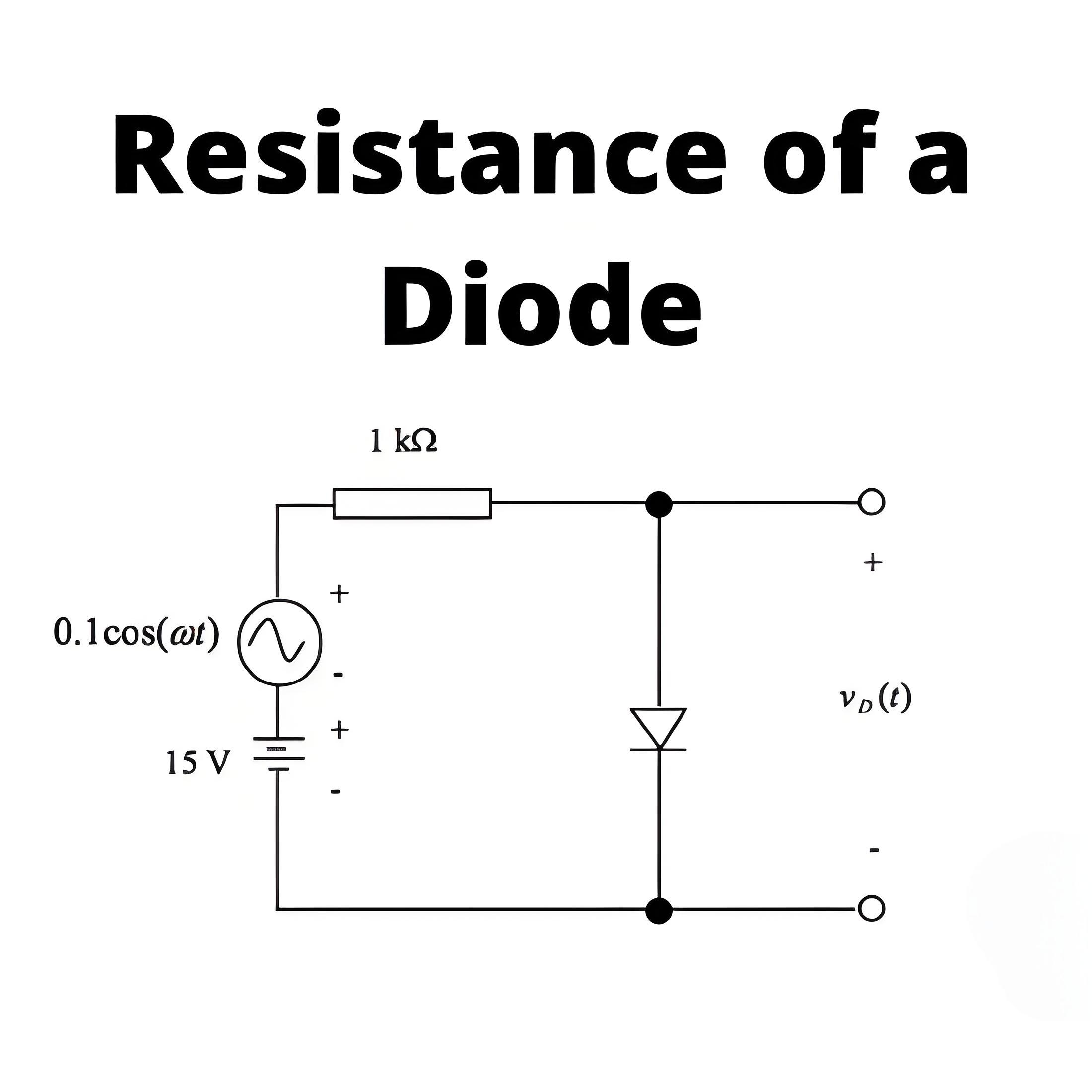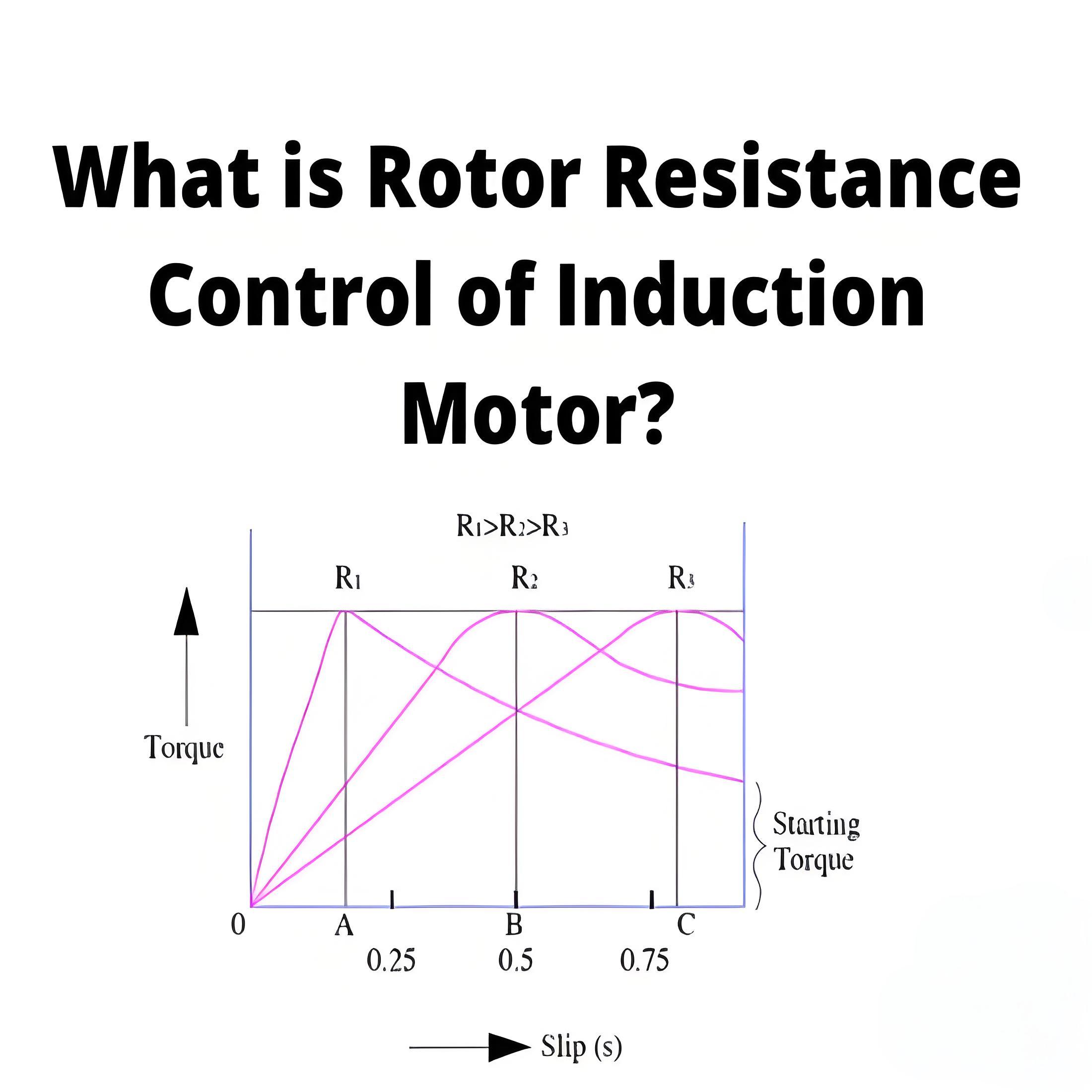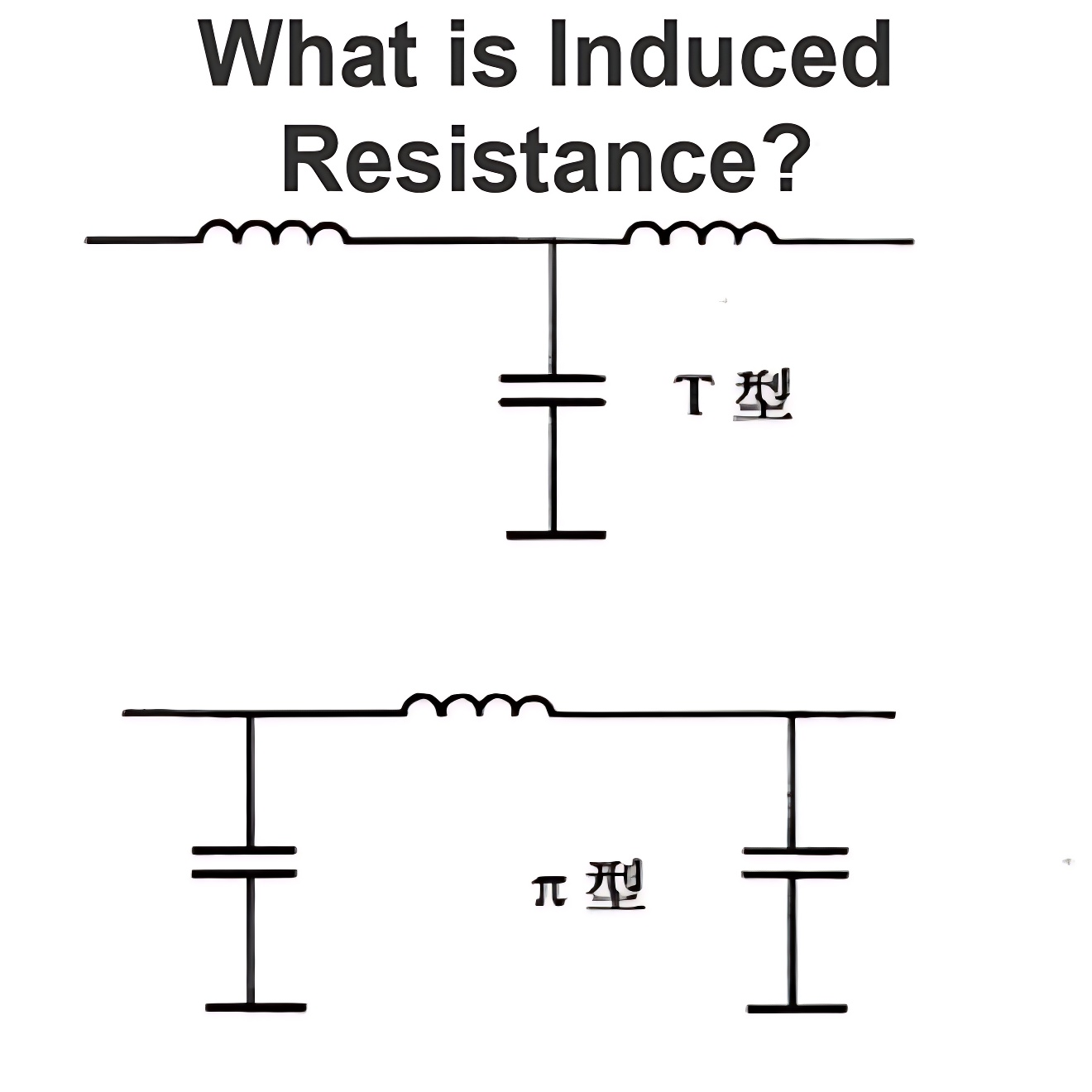Electrical Resistance: What is it?
What is Electrical Resistance?
Resistance (also known as ohmic resistance or electrical resistance) is a measure of the opposition to current flow in an electrical circuit. Resistance is measured in ohms, symbolized by the Greek letter omega (Ω).
The larger resistance, the greater the barrier against the flow of current.
When the potential difference is applied to a conductor, the current starts flowing, or the free electrons start moving. While moving, the free electrons collide with the atoms and molecules of the conductor.
Due to collision or obstruction, the rate of flow of electrons or electric current is restricted. Hence, we can say that there is some opposition to the flow of electrons or current. Thus, this opposition offered by a substance to the flow of electric current is called resistance.
The resistance of conducting material is found to be—
directly proportional to the length of the material
inversely proportional to the cross-sectional area of the material
depends on the nature of the material
It depends on the temperature
Mathematically, the resistance of a conducting material can be expressed as,
Where R = resistance of the conductor
![]() = length of the conductor
= length of the conductor
a = cross-sectional area of the conductor
![]() = constant of proportionality of the material known as specific resistance or resistivity of the material
= constant of proportionality of the material known as specific resistance or resistivity of the material
Definition of 1 Ohm Resistance
If a potential of 1 volt is applied across two leads of a conductor and if a current of 1 ampere flows through it, the resistance of that conductor is said to be one ohm.
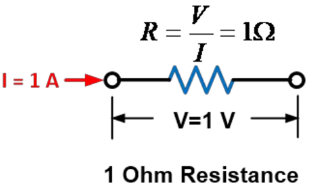
What is Electrical Resistance Measured in (Units)?
The electrical resistance is measured in (the SI unit for a resistor) ohm, and Ω represents it. The unit ohm (Ω) is named honor of the great German physicist and mathematician Georg Simon Ohm.
In the SI system, an ohm is equal to 1 volt per ampere. Thus,
Therefore, the resistance is also measured in volt per ampere.
Resistors are manufactured and specified over a wide range of values. The unit ohm is normally used for moderate resistance values, but huge and small resistances values can be expressed in milliohm, kiloohm, megaohm, etc.
Hence, the derived units of resistors are made according to their values, as shown in the table below.
Unit Name |
Abbreviation |
Values in Ohm |
Milli Ohm |
||
Micro Ohm |
||
Nano Ohm |
||
Kilo Ohm |
||
Mega Ohm |
||
Giga Ohm |
Derived Unit of Resistors
Electrical Resistance Symbol
There are two main circuit symbols used for electrical resistance.
The most common symbol for a resistor is a zig-zag line which is widely used in North America. The other circuit symbol for a resistor is a small rectangle widely used in Europe and Asia, termed the international resistor symbol.
The circuit symbol for resistors is shown in the image below.
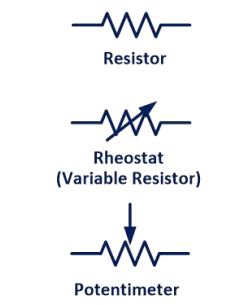
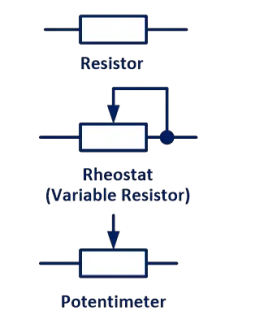
Electric Resistance Formula
The basic formula for resistance is:
The relationship between Resistance, Voltage and Current (Ohm’s Law)
The relationship between Resistance, Power, and Voltage
The relationship between Resistance, Power, and Current
These relationships are summarised in the image below.
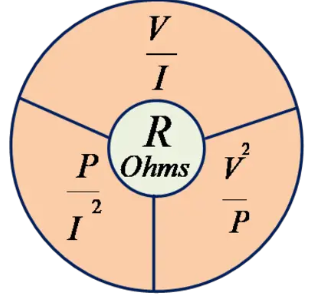
Resistance Formula 1 (Ohm’s Law)
According’s to ohm’s law
Thus, the resistance is the ratio of supply voltage and current.
Resistance Formula 2 (Power and Voltage)
The power transferred is the product of supply voltage and electric current.
Now, put ![]() in the above equation we get,
in the above equation we get,
Thus, we get resistance is the ratio of the square of the supply voltage and power. Mathematically,
Resistance Formula 3 (Power and Current)
We know that, ![]()
Put ![]() in the above equation we get,
in the above equation we get,
Thus, we get resistance is the ratio of power and square of the current. Mathematically,
Difference Between AC and DC Resistance
There is a difference between AC resistance and DC resistance. Let’s discuss this in brief.
AC Resistance
The overall resistance (including resistance, inductive reactance, and capacitive reactance) in AC circuits is called impedance. Hence, AC resistance is also called impedance.
Resistance = Impedance i.e.,
The following formula gives the value of AC resistance or impedance of AC circuits,
DC Resistance
The magnitude of DC is constant, i.e., there is no frequency in DC circuits; hence capacitive reactance and inductive reactance in DC circuits are zero.
Therefore, only the conductor or wire’s resistance value comes into play when subjected to DC supply.
Thus, according to ohm’s law, we can calculate the value of DC resistance.
Which One is More AC Resistance or DC Resistance?
There is no skin effect in DC circuits because the frequency in DC supply is zero. Hence, the AC resistance is more compared to DC resistance due to skin effects.
Usually, the value of AC resistance is 1.6 times the value of DC resistance.
Electrical Resistance, Heating and Temperature
Electrical Resistance and Heating
When the electric current (i.e., the flow of free electrons) passes through a conductor, there is some ‘friction’ between the moving electrons and the molecules of the conductor. This friction is referred to as electrical resistance.
Thus, the electrical energy supplied to the conductor is converted into heat due to friction or electrical resistance. This is known as a heating effect of an electric current produced by electrical resistance.
For example, if I amperes is flowing through a conductor of resistance R ohms for t seconds, the electrical energy supplied is I2Rt joules. This energy is converted in the form of heat.
Thus,
This heating effect is utilized to manufacture many heating electrical appliances such as an electric heater, electric toaster, electric kettle, electric iron, soldering iron, etc. The basic principle of these appliances is the same, i.e. when electric current flows through a high resistance (called a heating element), it thus produces the required heat.
One most commonly used alloy of nickel and chromium called nichrome has a resistance more than 50 times copper.
Effect of Temperature on Electrical Resistance
The resistance of all the materials is affected by the change in temperature. The effect of the temperature change is different depending on the material.
Metals
The electrical resistance of pure metals (e.g., copper, aluminum, silver, etc.) increases with temperature increases. This increase in resistance is large for the normal range of temperatures. Thus, metals have a positive temperature coefficient of resistance.
Alloys
The electrical resistance of alloys (e.g., nichrome, manganin, etc.) also increases with an increase in temperature. This increase in resistance is irregular and relatively small. Thus, alloys have a low value of positive temperature coefficient of resistance.
Semi-Conductors, Insulators & Electrolytes
The electrical resistance of semiconductors, insulators & electrolytes decreases with an increase in temperature. As the temperature is increased, many free electrons are created. So, there is a drop in the value of electrical resistance. Thus, such material has a negative temperature coefficient of resistance.
Common Questions About Resistance
Electrical Resistance of The Human Body
The resistance of the human body skin is high, but the internal body resistance is low. When the human body is dry, its average effective resistance is high, and when wet, the resistance reduces substantially.
Under dry conditions, the effective resistance offered by the human body is 100,000 ohms, and under wet conditions or broken skin, the resistance is reduced to 1000 ohms.
If high voltage electrical energy gets into human skin, then it quickly breakdown the human skin, and resistance offered by the body is reduced to 500 ohms.
Electrical Resistance of Air
We know that the electrical resistance of any material depends on the resistivity or the specific resistance of that material. The resistivity or specific resistance of the air is around ![]() to
to ![]()
![]() at 200 C.
at 200 C.
The electrical resistance of air is the measure of the ability of air to resist an electrical current. The air resistance is the result of collisions between the leading surface of the object and air molecules. The two main factors that affect the amount of air resistance are the speed of the object and the cross-sectional area of the object.
A breakdown or dielectric strength of air is 21.1 kV/cm (RMS) or 30 kV/cm (peak), which means air provides electrical resistance up to 21.1 kV/cm (RMS) or 30 kV/cm (peak). If electrostatic stress in the air goes beyond 21.1 kV/cm (RMS), a breakdown of air occurs; thus, we can say that air resistance becomes zero.
Electrical Resistance of Water
The specific resistance or resistivity of water is the measure of the ability of the water to resist an electrical current, which depends on the concentration of dissolved salts in the water.
Pure water has a higher value of specific resistance or resistivity as it does not contain any ions. When salts dissolve in pure water, free ions are produced. These ions can conduct an electrical current; hence resistance decreases.
Water with a high concentration of dissolved salts will have a low specific resistance or resistivity and vice versa. The table below shows the value of resistivity for different types of water.
Types of water |
Resistivity in Ohms-m |
Pure Water |
20,000,000 |
Seawater |
20-25 |
Distilled Water |
500,000 |
Rain Water |
20,000 |
River Water |
200 |
Drinking-Water |
2 to 200 |
Deionized Water |
180,000 |
Electrical Resistance of Copper
Copper is a good conductor; hence it has a low value of resistance. The natural resistance offered by copper is known as the specific resistance or resistivity of copper.
The value of specific resistance or resistivity of copper is ![]() .
.
What Do You Call the Phenomenon When Electrical Resistance Is Zero?
When the electrical resistance is zero, this phenomenon is called superconductivity.
According to ohm’s law,
If electrical resistance i.e., R = 0 then,
Hence, the infinite current flowing through the conductor if the resistance of that conductor is zero; this phenomenon is known as superconductivity.
We can also say that if electrical resistance is zero, it has infinite conductance.
How Does Resistivity Affect Resistance?
As we know that, the resistance of a conducting material can be expressed as,
Where R = resistance of the conductor
![]() = length of the conductor
= length of the conductor
a = cross-sectional area of the conductor
![]() = constant of proportionality of the material known as specific resistance or resistivity of the material
= constant of proportionality of the material known as specific resistance or resistivity of the material
Now, if ![]() then
then
Thus, specific resistance or resistivity of a material is the resistance offered by the unit length and unit cross-sectional area of the material.
We know that every conducting material has a different value of specific resistance or resistivity; thus, the resistance value depends on the length and area of the conducting material used.
Source: Electrical4u
Statement: Respect the original, good articles worth sharing, if there is infringement please contact delete.
Electrical4U is dedicated to the teaching and sharing of all things related to electrical and electronics engineering.

